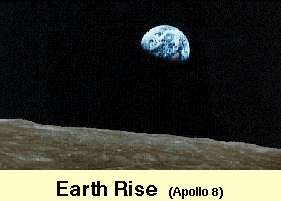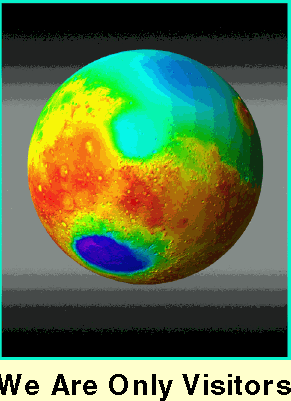
| At ISU |
| Placement |
| My Resume |
| Home |


The technical sessions I attended were Astrophysics (Q1), Space Activity in the 21st Century (IAA13), Astrobiology (IAA8), Hands-On Education (P1), and the Wednesday morning session on lunar exploration/colonization. I was also able to hear the paper on the Arthur C. Clarke Mission. My favorite part of the Conference was the displays. I did not really attended the plenary sessions- I would go, and sit in there for a little while, then get bored and go back to the display room, then want to share something with my classmates and return to the plenary session to try to find them, and again sit and listen for a while.
The astrophysics session mostly had papers about some different telescopes used for specific purposes. One of the more interesting ones was the COROT (Convection & Rotation) satellite built by Alcatel. It uses astrosisemology in an exoplanet small planet search. It tries to locate small planets around other stars by detecting a loss of signal from the star of 10-4. Another interesting paper was on XEUS (X-ray Evolving Universe Spectroscopy). It measures the X-ray spectra of black holes with a redshift z>4 to try and answer questions such as "How did galaxies form?" and "What is the history of the large scale structure of the universe?"
The Space Activity in the 21st Century session included an overview of where we currently are, the Space Generation Forum Overview, Olga's presentation on why we should go to the Moon and Mars, and reflections on the human presence in the solar system. These seem to agree that the primary motivations of space activity are exploration and adventure.
 The Astrobiology session was probably the most wide-ranging of the sessions that I attended. The first paper was on the aesthetics of composing interstellar messages. The presenter pointed out the importance of including three-dimensional and musical messages for species that might not experience the world the same way wee do. The second paper was on the concept of Panspermia or Cosmic Ancestry- the idea that life was created elsewhere and seeded on Earth. The third paper was on the man-machine synergy, and the presenter pointed out how in Star Trek the Borg, clones, and genetically modified humans are all scorned, but that something like one of these examples might be necessary. The fourth paper was on the influence of astrological observations on art. There were several silkscreens displayed in the room, and the author has made more available on the NASA website at http://farside.gsfc.nasa.gov. "We Are Only Visitors" was my favorite of the silkscreens. Both it and the Earthrise images come from the presentation found on the webpage mentioned. The last paper was on the influence of Science Fiction on science. Hey- it's a symbiote circle! The one influences the other and back again, in an accelerating cycle.
The Astrobiology session was probably the most wide-ranging of the sessions that I attended. The first paper was on the aesthetics of composing interstellar messages. The presenter pointed out the importance of including three-dimensional and musical messages for species that might not experience the world the same way wee do. The second paper was on the concept of Panspermia or Cosmic Ancestry- the idea that life was created elsewhere and seeded on Earth. The third paper was on the man-machine synergy, and the presenter pointed out how in Star Trek the Borg, clones, and genetically modified humans are all scorned, but that something like one of these examples might be necessary. The fourth paper was on the influence of astrological observations on art. There were several silkscreens displayed in the room, and the author has made more available on the NASA website at http://farside.gsfc.nasa.gov. "We Are Only Visitors" was my favorite of the silkscreens. Both it and the Earthrise images come from the presentation found on the webpage mentioned. The last paper was on the influence of Science Fiction on science. Hey- it's a symbiote circle! The one influences the other and back again, in an accelerating cycle.
The Hands-On Education session was probably the most useful for me personally. Not only did I finally get a clear picture on what Project Starshine is supposed to be, I also met Rodney Buckland who had an idea for a possible MSS student placement that I am interested in. Some of the other projects presented were the Japanese water rocket program; a Mars lander with an inflatable habitat designed by five students in two semesters; PehuenSat, a part of the space education program of the National University of Argentina; and a 3D computer game for learning orbital dynamics called Space Pinball.
Most of the papers presented in the Lunar Exploration and Colonization session had something to do with mining, but there was one legal paper presented. The presenter got everyone's attention by putting up a slide of a castle and a horse, to illustrate the history of trust law, and demonstrate how the Moon, and other extraterrestrial bodies and resources, are held in trust for future generations. The main point was that we can use them all we want, as long as there is benefit for all of mankind, and particularly future generations.
The Arthur C. Clarke Mission: Self-Organizing, Imaging Robot Explores in the Oceans of Europa is another attempt to find life elsewhere. The reason it is called the Arthur C. Clarke Mission is that the existence of life in the Europa Oceans was postulated in the science fiction novel 3001: Final Odyssey. It uses a bunch of little robots that are supposed to organize themselves into something useful, following principles something like those used in the game of Life. It is supposed to show the benefits of self-organization.
The displays were my favorite part of the IAF Conference, and not just because of the toys some had available. The English company DERA had a display about ion engines, and I was able to get an information sheet on it which might come in handy for the team project. I also spent a good half-hour or so talking to an ISU alumnus who was in charge of a both from a German program that has students design Lunar colonies.
On the whole, I really enjoyed the IAF Conference. I think it would be a good idea for the MSS 7 class to have the opportunity to attend. It adds another dimension to the MSS educational experience.

